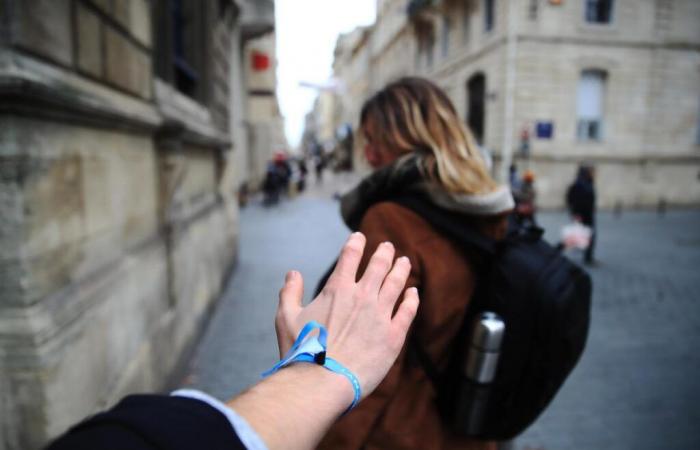
« The goal is not to blame people who did not react. » Clara Denort, responsible for awareness-raising and support within the Nantes association Résonantes, which fights against sexist and sexual violence, insists on this point. Whether you are a victim or witness of street harassment, it is sometimes difficult to know how to act properly. Whether it is out of fear, because we are in a state of astonishment or because of what we call “the spectator effect” – the more people who see a scene the less they will react.
However, this help is precious. “In 79% of cases of harassment, victims say that the intervention of a witness improved the situation. But only 25% of victims were helped,” says the host. “When a first person intervenes, it often triggers the help of other witnesses,” continues Faty N’Diaye, from the association.
Clara Denort, awareness and support officer within the Nantes association Résonantes.
J. T.
This is the whole objective of the “Stand up” training (1) offered on Thursday, November 7 by the Community of Communes of Sud-Gironde and Résonantes to the inhabitants of the territory: learning to react with simple gestures.
Several forms of harassment
If street harassment can also affect men (victims and witnesses), that evening, at the CdC headquarters in Mazères, 100% of the participants – around ten – were women. “More than 80% of women have already been victims,” insists Clara Denort. So when she asks for examples of street harassment, the answers follow instinctively: “unwanted contact”, “whistling”, “insult”, “being followed”…
There are five ways to act, called the “5Ds”: distract, delegate, document, dialogue and lead
“I think I was a victim in every possible way,” confides Laura, 17. There are in fact several types of street harassment. Verbal harassment (physical remarks, insistent requests for a telephone number), non-verbal harassment (making animal noises, honking) and physical harassment (hitting, sexual assault).
Choose your method
So how to react? Contrary to what the majority of participants thought, there is not only the direct method, that is to say directly addressing the harasser or reacting to the aggression. There are five ways to act, from the least direct to the most direct, called the “5Ds” to distract, delegate, document, dialogue and lead. “Everyone chooses the method with which they are most comfortable. You have to listen to yourself before acting and be sure you are safe,” advises Clara Denort.
This could include, for example, asking the victim or the harasser the time, pretending to drop something and putting yourself in between (distracting); ask for help from other witnesses, the bus driver, the nightclub bouncer, etc. (delegate); film or record the scene (document) – “a complementary method, if another witness has already reacted”, specifies the facilitator –; ask the victim how they feel and if they need help even after the events have passed (dialogue); or address the harasser directly (direct).
Awareness
“I would never have thought of distracting even though it’s super simple,” reacts at the end of the training, Anna, 22, who came with her mother, a CPE in a high school, for whom this “type of training should be OBLIGATORY “. “Why not when students start college,” suggests Valérie.
“It made me realize a lot of things, I will have a different outlook from now on”
This Thursday evening, the objective seems to have been achieved, the participants leave sensitized and ready to act. “It made me realize a lot of things,” analyzes Clémence, 16 years old. Before I didn't think I had ever witnessed street harassment, although I sure had. I will have a different outlook from now on. » “The more people who are aware of these methods, the more they can act,” summarizes Clara Denort.
(1) This training was created by the American NGO Right to be, L'Oréal Paris and the Women's Foundation. It is possible to do it online. It is open to all and free.
“Together against violence”
This training is part of the CdC's action “Together against violence”, the objective of which is to raise awareness of domestic, sexist and sexual violence. Until December 8, several actions are organized in the region. We can note the exhibition “Wounds of women” visible on rue Maubec in Langon until November 15 then in certain town halls of the CdC, a flash-mob “let's dance against violence”, place du Général-de-Gaulle in Langon on November 15 at noon as well as a solidarity walk and run on November 23 in Toulenne. More information on the CdC website.





